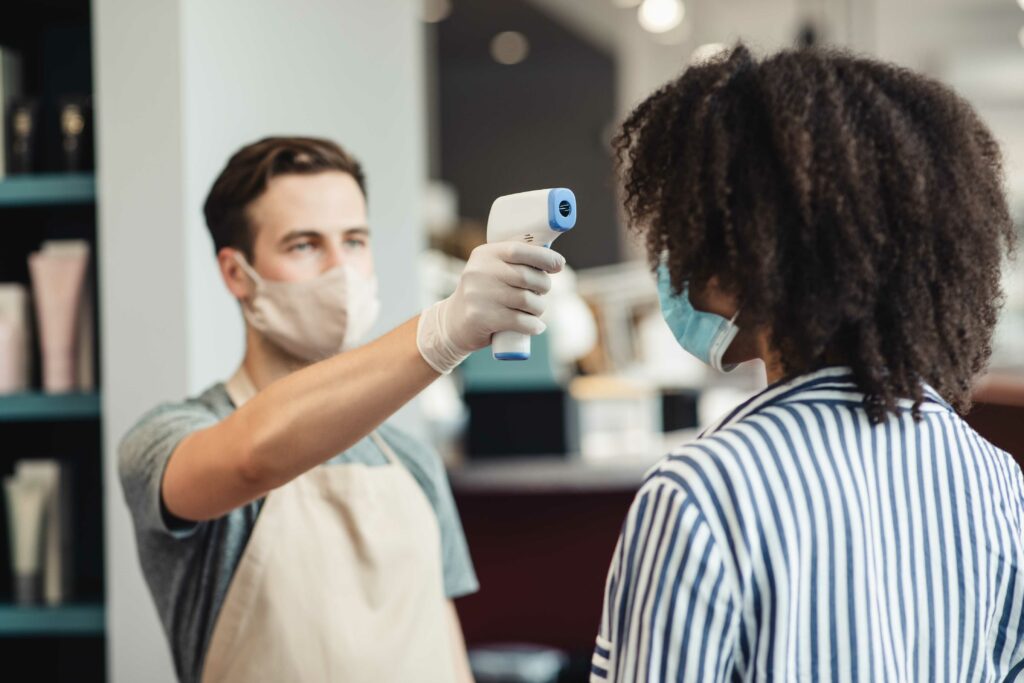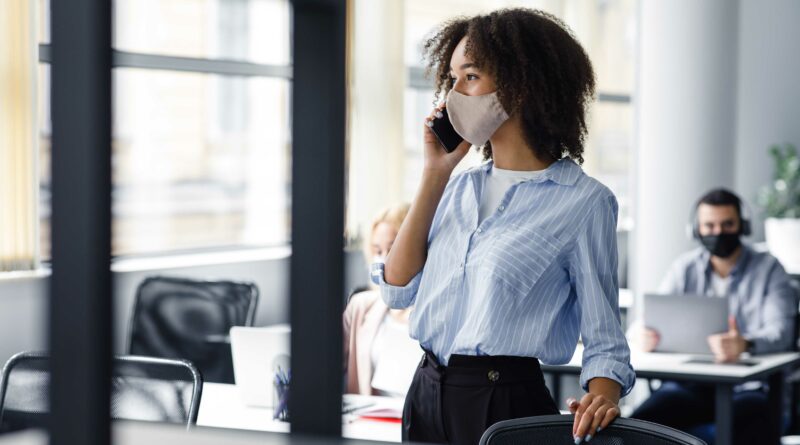Reducing Risk for Your Business During COVID-19
The COVID-19 pandemic has introduced an element of uncertainty into the workplace. The risk of contracting the virus is still a real threat to public health and a source of great concern for many people around the world. As a result, the modern workplace has undergone radical changes in a short period of time.
While businesses are still prone to risks such as poor hiring choices and financial hardships, they now have to deal with a significant health risk as well. That’s why we’ve assembled this guide to help you effectively manage risk for your business during the COVID-19 pandemic.
Prioritize Health & Safety
One of the primary risks facing any business during the pandemic is the health and safety of its workers. Before conducting background checks or taking other risk reduction measures, minimizing COVID-related health risks should be considered an additional priority for you as an employer. After all, you want to make sure that you and your workers are in a safe environment where you can stay in good health.
An outbreak at your workplace could have tragic consequences for those who are exposed to the virus. In addition to that, your business would likely be required to shut down until the outbreak was under control, meaning it could take weeks or even months until you could start back up again. So, in order to safeguard the health of your employees and keep your business up and running, consider the following guidelines for both preventing an outbreak and managing one if it occurs.
To prevent an outbreak
- Shift to remote work. Figure out a way for your staff to work remotely, if possible, in order to avoid physical contact and minimize the risk of an outbreak. However, if the nature of your business won’t allow remote work, then only allow essential employees onto the worksite. You could also adjust the hours of your workers and transition to staggered shifts, so that not too many people are in the workplace at one time.
- Send sick employees home. Tell your employees to stay home if they aren’t feeling well or if they’re displaying any potential symptoms of the virus, such as a persistent cough, fatigue, shortness of breath, or fever.
- Get a no-touch temperature scanner. Conduct temperature checks on employees before they begin their shifts. In addition, run checks on clients before they enter your workplace.

- Institute a mask policy. Make it your company’s policy to require employees to wear facial coverings in order to minimize the risk of infection. Either provide them with masks or, if they opt to buy their own, offer to reimburse them. If clients need to come into your workspace, inform them ahead of time that they’ll need to wear masks and sanitize their hands before entering. Keep extra masks and hand sanitizer around for this purpose.
- Create sanitation stations. Provide hand-washing stations and alcohol-based hand sanitizers at accessible places, and encourage your workers to use them on a regular basis.
- Avoid physical contact. Instruct your employees to avoid physical contact with one another, if possible, and to keep their hands off of each other’s possessions (such as cell phones, work tools, work computers, etc.)
- Regularly clean your workplace. Buy chemical cleaners approved by the Environmental Protection Agency (EPA) and regularly clean and disinfect workspaces. Come up with a cleaning schedule in order to continually disinfect workspaces throughout the day.
To manage an outbreak
- Send workers home at the first sign of sickness. Instruct workers feeling potential symptoms to get a COVID-19 test, report the results, and potentially self-isolate for a minimum of 14 days.
- Track the virus. Develop a testing strategy to attempt to identify any other cases in the workplace. Track points where infected employees could’ve transmitted the virus to others.
- Don’t leave your other employees in the dark. Inform other employees in the workplace about the infection—however, don’t reveal the identity of the infected person, as this can violate the Americans with Disabilities Act (ADA) guidelines.
- Contact local health authorities. If you record more than one case of COVID-19 within your workplace, you should contact the proper health authorities, who can then conduct an investigation, provide you with advice, and help you manage the outbreak.
Screen New Hires
In addition to instituting new health protocols as a result of COVID-19, it’s also important to continue practicing other risk reduction strategies in your business. Screening potential new hires is always an essential part of managing risk as a business owner, but it’s especially important right now. Given the current situation, hiring an irresponsible individual could potentially endanger the health of your other employees.
With a strong screening process in place, you can make informed hiring decisions and ensure that you bring the right people onto your team. In addition to being a health risk, making a bad hire could end up hurting your business and costing you money. So take a look at the following screening methods and put one or all of them into place in order to hire the right candidate the first time around.
Run a background check
When you run a background check, you can confirm that a client is who they say they are. Whether you want to do a background check, check their credit, or confirm their educational background, it’s now easier than ever before. You can conduct a simple background check online at an affordable price. And it’s well worth the investment, since a background check can provide you with a more comprehensive view of a candidate before extending an offer, and make you less vulnerable to a negligent hiring lawsuit should one arise in the future.

Request references
When you create a job posting, ask applicants to include a few references, with contact information, in addition to their resume. Personal or professional references may be able to provide you with valuable details about a candidate. By reaching out to a candidate’s references, you’ll gain insight about who they are as a person and a worker from people who have known them for a while.
Look at social media
Before making any hiring decisions, take a look at a candidate’s social media accounts. This is just to ensure that they aren’t posting anything grossly irresponsible, or promoting anything that you wouldn’t want your company to be associated with. Keep in mind that if they maintain public social media profiles, your clients and work associates will be able to see them, and their content could reflect on your company.
It can be difficult to deal with the drastic changes that COVID-19 has brought about in the workplace. However, you can take steps to adapt to these new conditions and, in most cases, keep your business running. The only way you’ll be able to keep it running, though, is by reducing the risks you face. So get organized and institute measures to prevent the spread of the virus, come up with a plan in case of an outbreak, and, finally, hire responsible people who can be trusted to carefully follow your new policies.











